
Black history in Canada
Afro-Canadian communities play an important role in shaping Canada’s culture and history. Parks Canada and the Historic Sites and Monuments Board of Canada (HSMBC) invite you to learn more about important Black historical persons, places, and events that have contributed to the history of Canada.
Do you know of a person, place, or event related to Black history that should be recognized?
Submit a nomination
Featured designations

Underground Railroad National Historic Event
During the 1800s, thousands of people of African descent escaped enslavement in the United States via the Underground Railroad and settled in what is now Ontario.
Location : Commemorative plaque: 200 Pitt Street East, Windsor, Ontario

Olivier Le Jeune National Historic Person
Olivier Le Jeune was born in Madagascar or Guinea. He was the first enslaved person, that we have a name for, who was born in Africa and lived permanently in Canada in the mid-1600s. At that time, the country was not known as Canada. Le Jeune was taken from Africa to Europe as an enslaved person when he was young, and later to Quebec City.
Location : Commemorative plaque: Cartier-Brébeuf National Historic Site, 175 de l'Espinay Street, Québec, Quebec

Africville National Historic Site
In the 1830s and 1840s, African Canadian families created a community in Africville that grew to include a school and a church. In the 1960s, they were forced to leave, and their community was demolished, because the City of Halifax wanted factories and other industries to be built there instead.
Location : Commemorative plaque: 5795 Africville Road, Halifax, Nova Scotia
The Underground Railroad
This map shows important locations connected to the Underground Railroad National Historic Event. Check out the map to learn more about the people, places, and events linked to it.
List of people, places, and events
| Number | Name | Type | Description |
|---|---|---|---|
| 1 | Underground Railroad | (NHE) | Marking the network dedicated to helping free enslaved Black Americans along the Detroit and Niagara rivers 200 Pitt Street East, Windsor, Ontario |
| 2 | Mary and Henry Bibb | (NHP) | Refugees escaping enslavement in the US, these two influenced the development of the African Canadian community through their newspaper, “Voice of the Fugitive” 3277 Sandwich Street, Windsor, Ontario |
| 3 | Sandwich First Baptist Church | (NHS) | Example of style of church built by Underground Railroad Refugee communities 3652 Peter Street, Windsor, Ontario |
| 4 | Nazrey African Methodist Episcopal Church | (NHS) | Built by refugees from American slavery, now part of the North American Black Historical Museum complex 277 King Street, Amherstburg, Ontario |
| 5 | Amherstburg First Baptist Church | (NHS) | Underground Railroad stop near Detroit River led by escaped enslaved abolitionist Anthony Binga Sr. 232 George St, Amherstburg, Ontario |
| 6 | Buxton Settlement | (NHS) | Underground railroad refugee settlement 7th Concession, Dillon and Drake Roads, Buxton Settlement, Buxton, Ontario (Chatham-Kent) |
| 7 | Reverend William King | (NHP) | Abolitionist who owned slaves in the US; founded the Elgin Settlement (present-day Buxton) which grew into a community for refugees escaping slavery. St. Andrew’s United Church, South Buxton, Ontario |
| 8 | Abolition Movement in British North America between 1783 and 1860 | (NHE) | Marks the struggle to abolish slavery in British North America between 1783 and 1860 135 King Street East, Chatham, Ontario |
| 9 | Mary Ann Shadd | (NHP) | Underground Railroad activist, teacher, founder of the Provincial Freeman newspaper which challenged slavery and bigotry 177 King Street East, Chatham, Ontario |
| 10 | Reverend Josiah Henson | (NHP) | 29267 Uncle Tom’s Road, Dresden Underground Railroad conductor, important to the abolition movement; his memoirs acted as inspiration for Uncle Tom’s Cabin 29251 Freedom Rd, Dresden, ON N0P 1M0 |
| Number | Name | Type | Description |
|---|---|---|---|
| 11 | Thornton and Lucie Blackburn | (NHP) | Legendary escapees from slavery who established first cab company in Toronto 19 Sackville Street, Toronto, Ontario |
| 12 | George Brown | (NHP) | Father of Confederation, key player in the Abolitionist movement, co-founded Anti-Slavery Society of Canada. George Brown House, 186 Beverley Street, Toronto, Ontario |
| 13 | George Brown House | (NHS) | Designated as it was the home of George Brown and associated closely with the Abolitionist movement and Underground Railroad history in Toronto. 186 Beverley St, Toronto, Ontario |
| 14 | Griffin House | (NHS) | Associated with Black settlement in BNA in early 19th century, example of the diversity of the Black settler experience, as it is a more elaborate dwelling than was common among Black refugees. 733 Mineral Springs Road, Hamilton, Ontario |
| 15 | Harriet Tubman | (NHP) | Public face of the Underground Railroad in British North America, helped many to escape slavery from the US to Canada and helped Black refugees settle after their arrival. 92 Geneva Street, St. Catharines, Ontario |
| 16 | Salem Chapel, British Methodist Episcopal Church | (NHS) | Underground Railroad church, associated with famed Underground Railroad conductor Harriet Tubman. 92 Geneva Street, St. Catharines, Ontario |
| 17 | R. Nathaniel Dett Chapel British Methodist Episcopal Church | (NHS) | This church saw early Black settlement in Niagara and played a role supporting Underground Railroad refugees. 5674 Peer Street, Niagara Falls, Ontario |
| 18 | Upper Canadian Act of 1793 Against Slavery | (NHE) | First legislation in a British territory against slavery. 494 Mississauga St., Niagara-on-the-Lake, Ontario |
Black history by themes
Remarkable persons
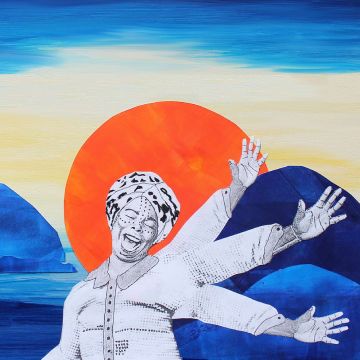
Chloe Cooley
Chloe Cooley was an enslaved woman of African descent who is known for her courageous resistance against her violent and forced transportation to New York in 1793.

Ernest Melville DuPorte
This researcher and entomologist from the British West Indies was a leading expert on insect morphology.

George Dixon
The first Black boxer and Canadian to win a world title and regarded as one of the top fighters of the late 19th century, Dixon was renowned for his stamina, speed, and defence.
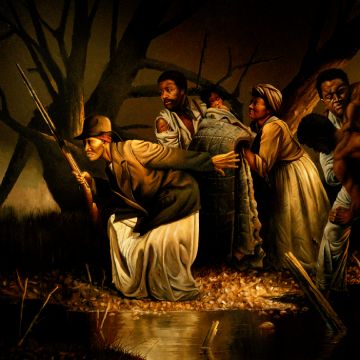
Harriet Tubman
The most famous “conductor” on the Underground Railroad, Harriet Tubman, escaped slavery to become one of the great heroes of the 19th century.

John Ware
John Ware was a Black cowboy who forged a successful ranching career despite racism, rough frontier conditions, and having been enslaved.
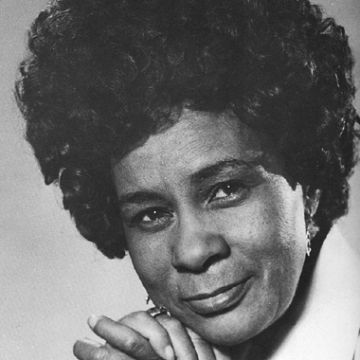
Kathleen 'Kay' Livingstone
As the driving force behind the first National Black Women’s Congress in 1973, Livingstone advanced the cause of African-Canadian women.

Larry Gains
Born and trained in the Cabbagetown neighbourhood, this Black boxer was one of the world’s best heavyweights in the 1920s and 1930s, winning the Canadian and British Empire heavyweight titles.
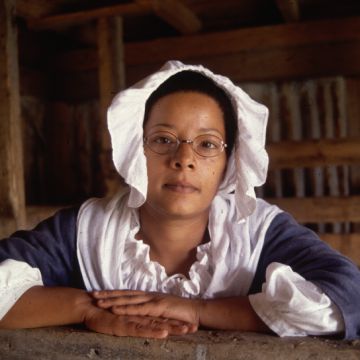
Marie Marguerite Rose
Captured in Africa at the age of 19 and transported to Île Royale, Marie Marguerite Rose is seen to be a key figure of the initial phase of Black slavery in Canada.
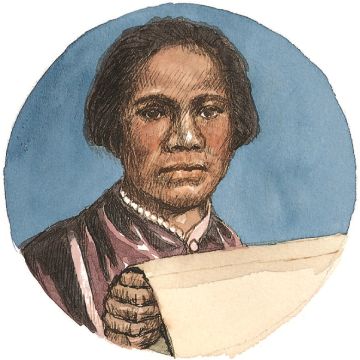
Mary Ann Shadd
A prominent activist in the Underground Railroad refugee communities who established Provincial Freeman, an influential newspaper which waged war on slavery and bigotry.

Olivier Le Jeune
Born in Madagascar or on the coast of Guinea, Le Jeune is the first documented person of African descent to have permanently resided in what is now Canada.
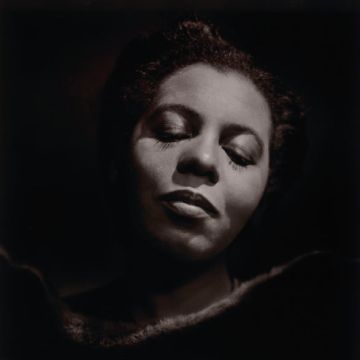
Portia May White
The first African-Canadian woman to win international acclaim, contralto Portia White had a remarkable career on the concert stage.

Richard Pierpoint
Richard Pierpoint was captured, forcibly transported to the Thirteen Colonies, and sold into slavery. He fought as a free man with Butler’s Rangers, a loyalist unit, during the American Revolution.
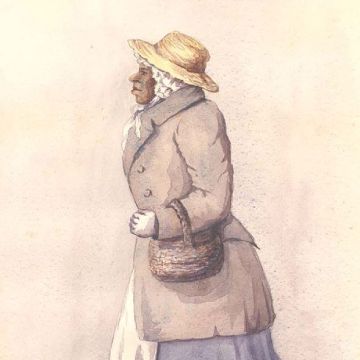
Rose Fortune
Rose Fortune was one of more than 3,000 Black Loyalists who gained freedom and resettlement in Nova Scotia in 1783–1784.

Thomas Peters
Thomas Peters escaped enslavement in North Carolina to fight on the side of Britain during the American Revolutionary War as a sergeant in the Black Pioneers.
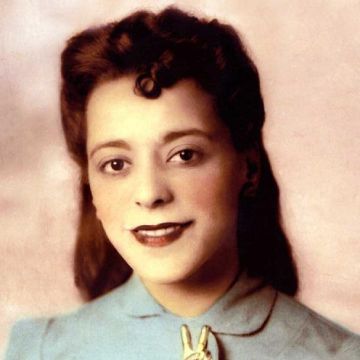
Viola Desmond
In 1946, Halifax businesswoman Viola Desmond confronted the racism that African-Nova Scotians routinely faced when she refused to move from her seat in the “whites-only” section of the Roseland Theatre.
Noteworthy duos

Mary and Henry Bibb
Arriving as refugees from enslavement in the United States, Mary and Henry Bibb fought all their lives to improve the well-being of the African Canadian community.

Thornton and Lucie Blackburn
The Blackburns' determination to build free lives provides a window on the experience of many refugees in the Underground Railroad era
Defining events

Black Migrations to Sierra Leone
The migrations of Black Loyalists and Jamaican Maroons to Sierra Leone in 1792 and 1800, respectively, exemplified the frustrations and disillusionment of self-emancipated and free people of African descent in Nova Scotia and New Brunswick.

Breaking Racial Barriers in the National Hockey League
Since the establishment of the National Hockey League in 1917, non-white athletes faced racial barriers, preventing them from playing in the league. In the early decades of the NHL, men such as Paul Jacobs, and Willie O’Ree confronted widespread racism and prejudice on and off the ice.

Celebrations of Emancipation Day
Emancipation Day celebrations began on 1 August 1834, when Canadians of African descent in Upper and Lower Canada marked the abolition of enslavement.

Nº 2 Construction Battalion, C. E. F.
This Battalion reflected the strong determination of Black men to overcome racism and contribute to Canada’s First World War effort.

The Enslavement of African People in Canada
Between c. 1629 and 1834, there were more than 4,000 enslaved people of African descent in the British and French colonies that became Quebec, Ontario, Nova Scotia, Prince Edward Island, and New Brunswick.

The Jamaican Maroons in Nova Scotia
In 1796, more than 500 Maroons from Trelawny Town in the mountains of northwestern Jamaica were forcibly transported to the British colony of Nova Scotia.

The Underground Railroad
From the early 19th century until the American Civil War, settlements along the Detroit and Niagara rivers were important terminals of the Underground Railroad.

The Universal Negro Improvement Association of Canada (UNIA)
The Universal Negro Improvement Association (UNIA), founded by Jamaican-born Marcus Garvey in 1914, was part of a global movement to unite, empower, and improve the lives of people of African descent.

West Indian Domestic Scheme
The West Indian Domestic Scheme was a targeted immigration program through which approximately 3,000 women from the Caribbean came to Canada to work as domestic servants.

No time to read?
Find traces of the lives of enslaved people at the 18th-century French Fortress of Louisbourg, and learn more about the life of Marie Marguerite Rose.
Search through over 3,600 designations listed in the Directory of Federal Heritage Designations (DFHD)
The Directory of Federal Heritage Designations offers a complete list of federal designations stemming from various programs. It includes information on districts, buildings, events, railway stations, lighthouses and people who are of historic value or interest.